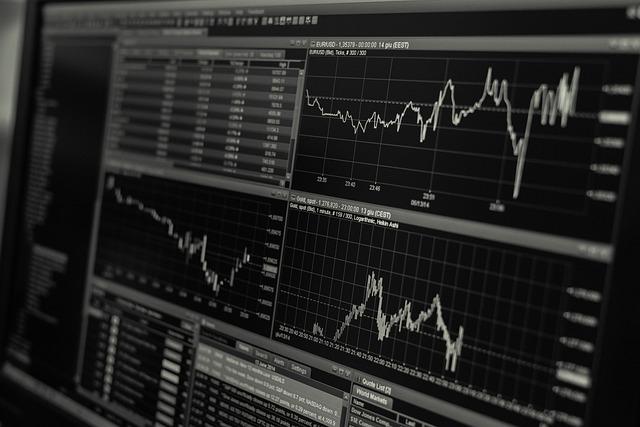Ever wondered how diving into the world of trading could flip your life upside down—in the best way possible? Well, let me take you on a little journey through my own experience. Becoming a trading expert didn’t just boost my bank account; it reshaped how I think, work, and even see the future. if you’ve ever been curious about what it’s really like behind those screens full of numbers and charts,stick around—I’m about to share how this adventure changed everything for me.
Starting Out: My first Steps into the Trading World
When I first dipped my toes into trading, it felt like stepping into a maze without a map. Charts full of colorful lines, unfamiliar jargon flying everywhere, and the constant buzz of market news made me feel overwhelmed.But what kept me going was a curiosity that wouldn’t quit and a desire to turn small investments into meaningful profits. I started off by devouring everything I could find: books, webinars, forums, and even YouTube channels. Each day, I jotted down key concepts and practiced with demo accounts, testing strategies that seemed promising.
Those initial stages taught me some critically important lessons early on:
- Patience is more powerful than speed. Rushing leads to mistakes; studying trends matters more than swift wins.
- Risk management isn’t optional. Protecting capital was as important as making money.
- Learning to read the market’s mood. Emotions influence trades as much as charts do.
| Step | action | Result |
|---|---|---|
| 1 | Opened a demo trading account | Got familiar with platform functions |
| 2 | Learned basic terminology | Gained confidence to start real trading |
| 3 | Tested simple strategies | Identified what works and what doesn’t |
The Tough Lessons that Shaped My Trading mindset
One of the hardest realities I had to face was that trading isn’t about luck or quick wins—it’s about discipline and emotional resilience. Early on, I made the mistake of chasing every “hot tip” and jumping into trades without thorough analysis. That reckless approach taught me to respect the market’s unpredictability and to trust a well-crafted plan over impulsive decisions. I learned to embrace losses as tuition fees rather than failures, a mindset shift that transformed how I approached every buy and sell. This composure under pressure became the keystone of my growth, and it’s a lesson I believe every trader has to learn the hard way.
- Patience isn’t just a virtue; it’s a trading necessity.
- Emotions need to be managed, not suppressed.
- Strategy beats intuition, especially over the long term.
- Every loss is a lesson hidden in disguise.
Here’s a quick comparison of my mindset then versus now, showing how pivotal these lessons were:
| Then | Now |
|---|---|
| Chasing quick profits | Focusing on long-term gains |
| Overtrading impulsively | trading with well-planned setups |
| reacting emotionally to losses | Learning and adapting from mistakes |
| Ignoring risk management | Prioritizing capital preservation |

Building a Strategy That Actually Works for Me
When I first dived into the world of trading, I realized quickly that no cookie-cutter approach was going to cut it. What works for one trader might fail spectacularly for another. It took me months of trial, error, and patience before I could identify the *unique rhythm* that syncs perfectly with my personality and lifestyle. Instead of blindly following popular strategies,I focused on crafting a plan centered on my strengths—patience,discipline,and a keen eye for patterns that others often miss. The key was embracing flexibility without losing sight of my core principles. That way, I wasn’t just trading—I was genuinely playing to win.
To keep things structured yet adaptable, I developed a simple checklist that became my daily trading compass:
- Market Research: Quick refresh of overnight news and global market sentiment.
- Risk Management: Define stop-loss and profit targets before every trade.
- Emotional Check-in: Am I calm or frustrated? Trading when emotionally balanced = better decisions.
- Review and Adjust: Take five minutes post-trade to log results and tweak next moves.
| Core Element | My Approach |
|---|---|
| Strategy Type | Swing & Day Hybrid |
| Trade Frequency | 3-5 per week |
| Risk per Trade | 1.5% of capital |
| key Indicator | Volume & Price Action |
how I Manage Stress and Stay Consistent Every Day
When the market gets volatile,it’s easy to let stress take the wheel. To stay grounded, I rely heavily on a few daily rituals that keep my mind clear and my decisions sharp. First up, mindfulness meditation—even just 10 minutes a day helps me reset and avoid impulsive trades. Alongside that, I stick to a strict routine, which includes regular exercise, balanced meals, and plenty of water. These might sound basic, but when you’re juggling numbers and emotions in real-time, they become lifesavers.
Consistency doesn’t come from motivation alone; it grows from intentional habits and a clear plan. Here’s a quick snapshot of what my daily workflow looks like to keep stress at bay and momentum steady:
| Time | Activity | Purpose |
|---|---|---|
| 6:30 AM | Meditation & journaling | Clear head & set intentions |
| 8:00 AM | Market analysis | Build strategy for the day |
| 12:00 PM | Physical exercise | Recharge energy & reduce fatigue |
| 3:30 PM | Trade review & reflection | Learn from wins & losses |
Additionally, I keep a handful of mantras pinned above my desk to ground me during tense moments. A few favorites include:
- “Trust the process.”
- “Stay patient, not perfect.”
- “focus on what you can control.”
Why Patience and Discipline Changed Everything
Transforming from a hopeful beginner to a confident trading expert required more than just learning charts or analyzing trends—it demanded cultivating two essential virtues: patience and discipline. In the early days, impulsive trades fueled by excitement often led to frustrating losses. Though, once I embraced the power of waiting for the right opportunities and sticking rigidly to my trading plan, everything clicked. It wasn’t about chasing every signal but about knowing when to sit back and let the market do its thing. This mindset shift protected my capital and maximized my gains, turning trading from a guessing game into a strategic craft.
Here’s a quick snapshot of the game-changing habits I developed:
- Setting clear entry and exit rules to avoid emotional decisions
- Using stop-loss orders to manage risk automatically
- Reviewing every trade honestly to learn and adapt
- Resisting the urge to overtrade and burn out
| Before | after |
|---|---|
| Chasing quick wins | Waiting for high-probability setups |
| Emotional decision-making | following strict trading rules |
| Frequent impulsive trades | Quality over quantity |
Q&A
Q&A: How Becoming a Trading Expert changed My life Forever
Q: What got you interested in trading in the first place?
A: Honestly, it all started out of curiosity. I was always fascinated by the stock market and how people could make money from it, but I had zero idea where to start. One day, I decided to just dive in and learn as much as I could—reading blogs, watching videos, and eventually trying out small trades.
Q: Was it difficult to learn at the beginning?
A: Oh, absolutely! The learning curve was steep. I made a ton of mistakes and lost some money early on. But every loss was a lesson, and slowly, the strategies started clicking. It wasn’t overnight, but persistence really paid off.
Q: When did you realize that you were actually good at trading?
A: That “aha” moment came after a few months of consistent gains. I began to understand patterns, market psychology, and risk management. It felt like suddenly the chaos made sense. My confidence shot up, and for the first time, I felt like I wasn’t just guessing.
Q: How did becoming a trading expert change your daily life?
A: Majorly! I went from a 9-to-5 grind to having more control over my time and finances. Trading gave me flexibility—sometimes I work a few hours a day, other times I take days off without stressing about bills. It’s honestly empowering to have that kind of freedom.
Q: What was the biggest mindset shift you experienced?
A: patience. Trading taught me to stay calm under pressure and not jump into decisions impulsively. It’s about playing the long game, managing risks, and accepting that losses happen. That mindset spilled into other areas of my life too—I’m way more level-headed now.
Q: Would you say trading made you financially autonomous?
A: Yes and no. It has definitely boosted my income and given me more financial security, but it’s not a get-rich-quick scheme. It takes discipline and continuous learning. That said, trading gave me a path to build wealth actively, which was life-changing.
Q: Any advice for someone thinking about getting into trading?
A: Start small, be patient, and never stop learning. Don’t fall for “get rich quick” hype—it’s mostly BS. Focus on understanding the market, develop a solid strategy, and treat it like a serious skill. Most importantly, be prepared for ups and downs; it’s part of the journey.
Q: How do you see your future with trading?
A: I see it as a lifelong skill that’ll keep evolving. Markets change, and I want to stay ahead.Beyond personal gains, I’m interested in sharing what I’ve learned to help others avoid the mistakes I made. Trading changed my life, and I hope it can do the same for many more people.
In Summary
and there you have it — my journey from clueless newbie to trading expert, and how it fully flipped my world upside down (in the best way possible). If there’s one thing I’ve learned, it’s that trading isn’t just about numbers or charts; it’s about patience, grit, and a whole lot of learning from mistakes. So, if you’re thinking about diving in, just remember: it’s a marathon, not a sprint. Keep pushing, stay curious, and who knows? Maybe one day you’ll be writing your own story about how trading changed your life forever. Thanks for reading, and here’s to your own trading adventures ahead!











